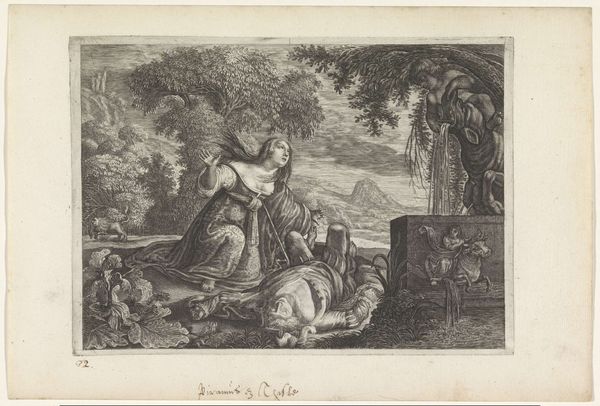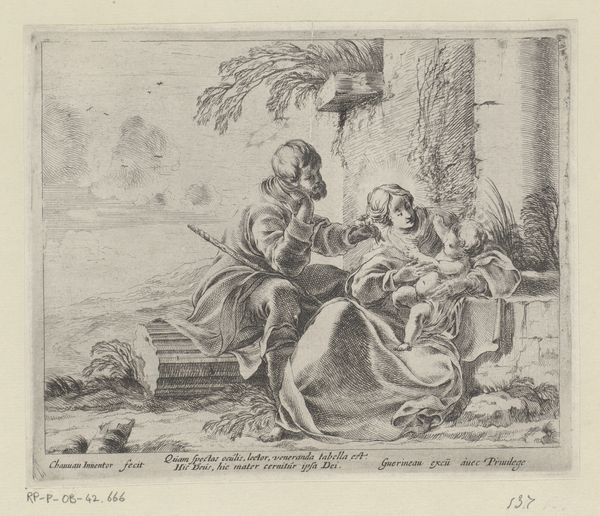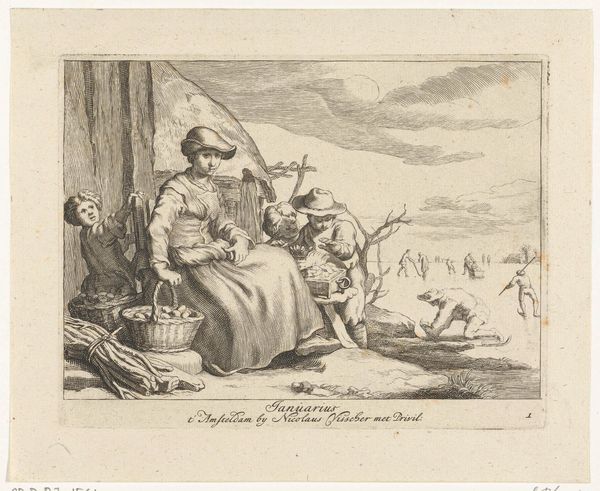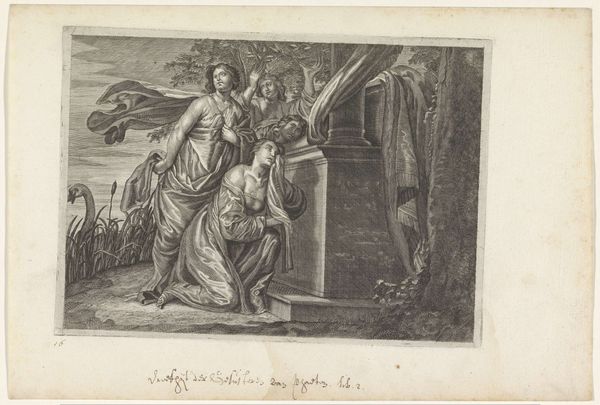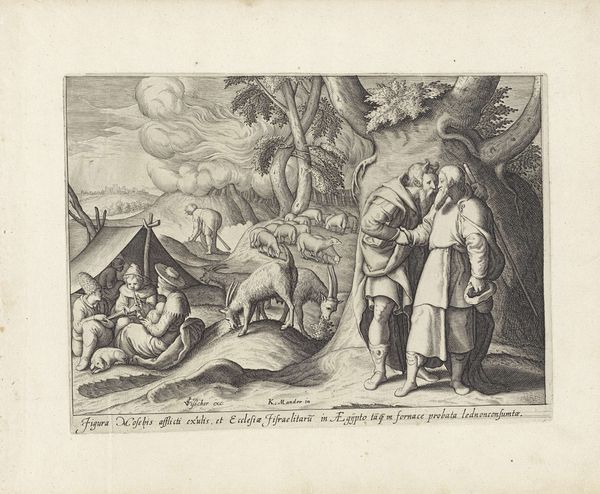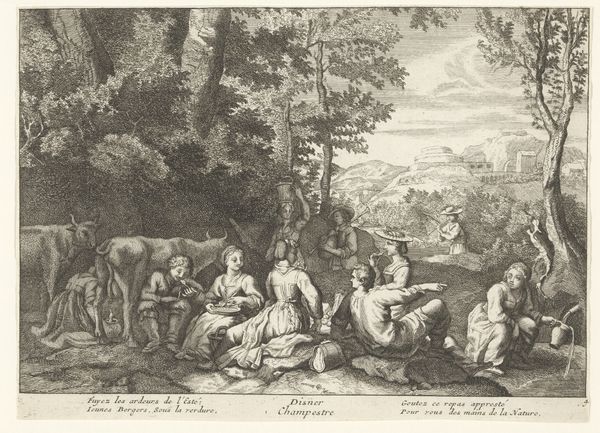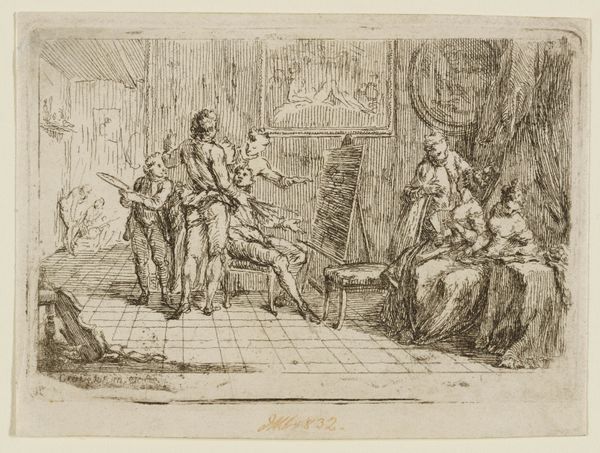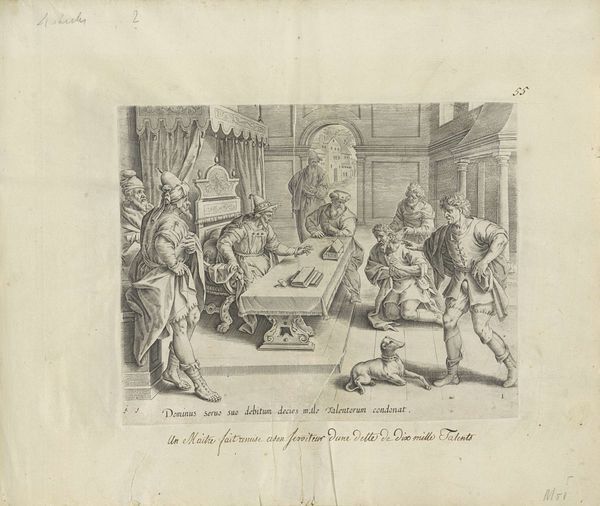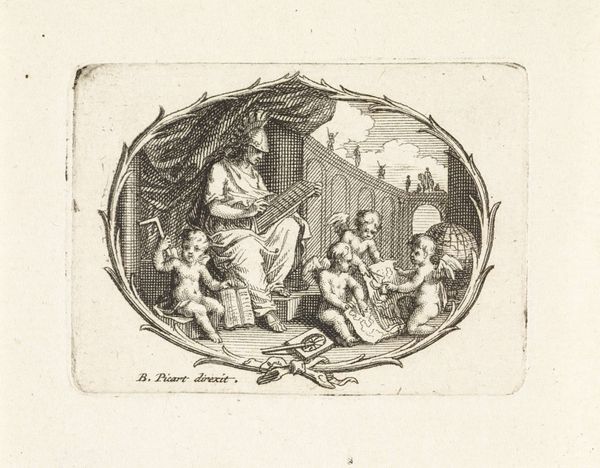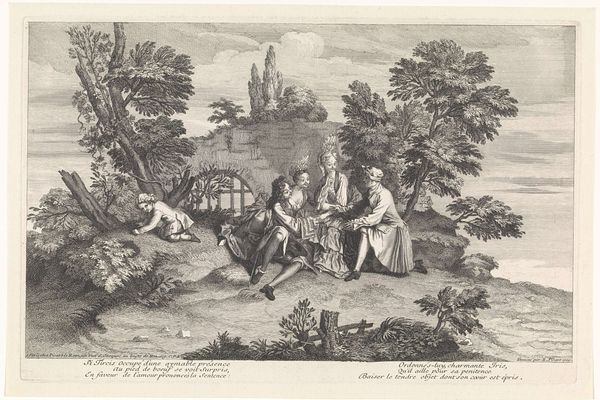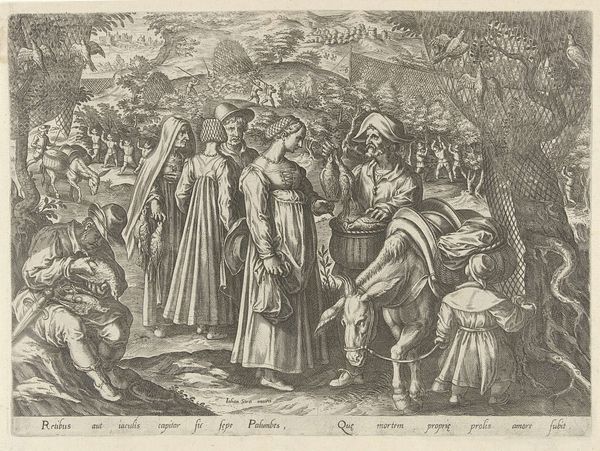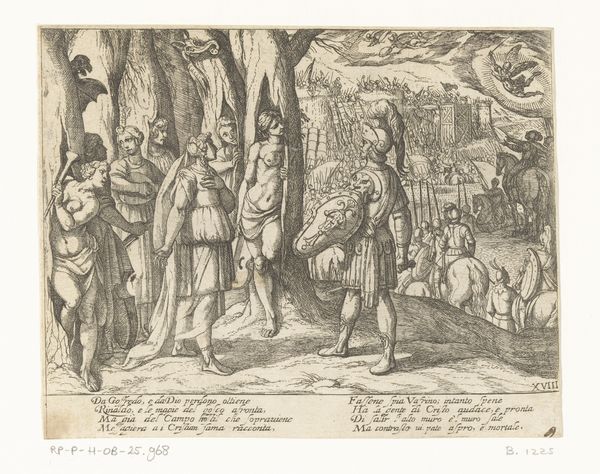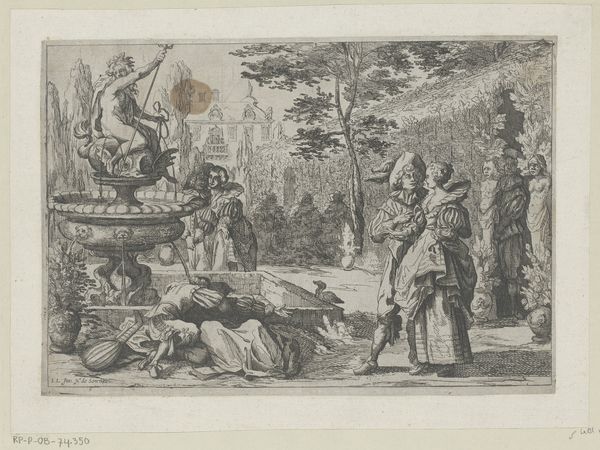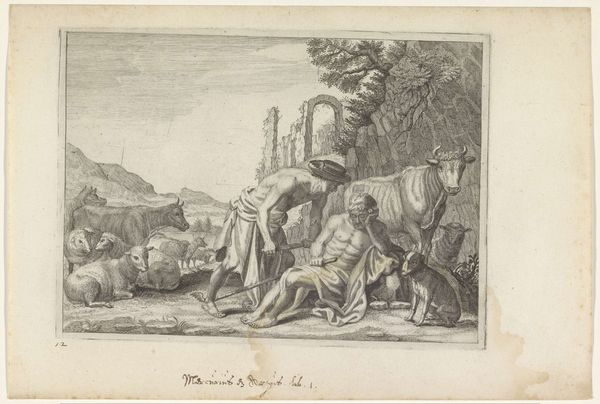
Deucalion en Pyrrha scheppen een nieuw mensenras c. 1636 - 1670
0:00
0:00
etching, engraving
#
baroque
#
etching
#
landscape
#
figuration
#
genre-painting
#
history-painting
#
engraving
Dimensions: height 161 mm, width 224 mm
Copyright: Rijks Museum: Open Domain
Editor: This etching, "Deucalion en Pyrrha scheppen een nieuw mensenras," from circa 1636 to 1670, is attributed to Crispijn van de Passe the Younger and depicts a landscape teeming with figures emerging from stones. It has a rather surreal, almost dreamlike quality, yet the execution feels precise. How do you interpret this work? Curator: I see here a potent allegory ripe for deconstruction. The scene illustrates the Greek myth of Deucalion and Pyrrha repopulating the world after a devastating flood, an act that speaks to themes of resilience and rebirth. But, crucially, *who* gets to participate in this "new" world? Is it genuinely new, or simply a reshuffling of existing power structures? Editor: That's a fascinating question. The figures emerging seem...uniform. Does this uniformity reinforce a specific societal ideal? Curator: Precisely. Consider the historical context: 17th-century Europe. The engraving implicitly reflects and reinforces societal norms and power dynamics. The myth is essentially a creation narrative, and creation narratives are rarely neutral. They establish hierarchies, legitimize certain behaviors, and exclude others. How might the experience of a woman or person of color differ when faced with this depiction of renewed creation? Editor: So, viewing it through that lens makes the idyllic scene appear less innocent. Curator: Exactly! This work offers a seemingly optimistic narrative of renewal. But let us challenge this! Who decides which stones become people and what structures remain unchanged in this 'new' world? Etchings such as this help preserve mythology, but should they be seen more critically? Editor: I hadn't considered it that way before, but it really changes the whole picture. Curator: It is important to engage with historical narratives, but we should always do so by using a contemporary social awareness framework. It pushes us to consider whose stories are being told, and more importantly, whose are being omitted.
Comments
No comments
Be the first to comment and join the conversation on the ultimate creative platform.
